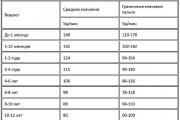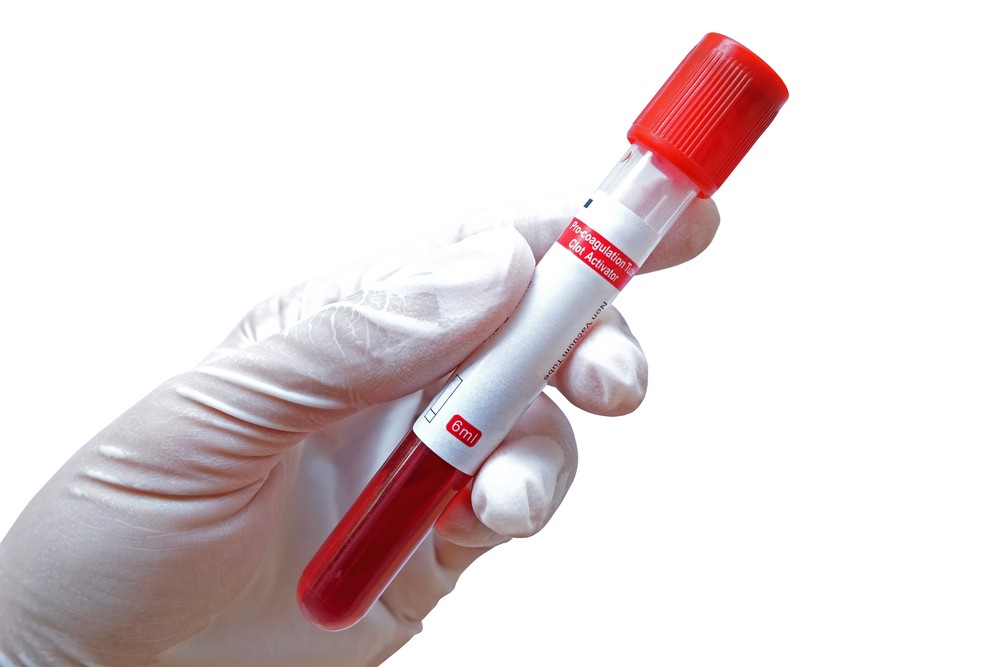RFMK in a blood test: what is it? the rate and reasons for the increase
In medical practice, human blood is one of the main objects of laboratory examinations that demonstrate the state of the patient's body.
Indicators such as leukocytes or blood sugar levels are known to patients, but there are tests that are a mystery to patients. What is RFMK? Which indicators are normal for a healthy person, and which are a characteristic sign of pathology?
What is RFMC?
RFMK are soluble fibrin-monomer complexes. In simple terms, RFMK represents the level of fibrin breakdown, which is responsible for the occurrence of blood clots in human vessels.
Note. An increase in fibrin (blood cells) in the blood is a sign of thrombosis, a general circulatory disorder that has significant harm to the human body.
As a rule, an examination is prescribed by specialists in the following cases:
When preparing a patient for surgery;
Suspicion of the presence of thrombosis, DIC - syndrome;
The patient is on anticoagulant therapy;
A woman planned to conceive a fetus through IVF;
When examining expectant mothers (the examination must be carried out three times: during the initial examination, in the third trimester, during the prenatal examination).
RFMK norms
Often, patients who have received a referral to the RFMC ask themselves what kind of analysis it is and what is the interpretation of the results. In medical practice, there are universal standards for assessing blood clotting in patients.
According to experts, a negative result is the ideal value for an adult. Thus, with an ideal diagnostic result, fibrin in the blood should not be present.
A positive result is one in which fibrin appears in the patient's plasma within 2.5 minutes. By means of a specialized formula, doctors translate the indicated time into a numerical value of the analysis.
The normal level of RFMK varies between 3.38 + 0.02 mg per 100 ml. The limit value is 4 mg.
Note. When conducting a study, it is necessary to take into account the reference indicators of a particular laboratory. Often, the norm in individual medical institutions varies up to 5.0 mg / 100 ml, causing unnecessary concern for the patient.
Violation of the norm in the diagnosis indicates a violation of the hemostasis system, which is a clear sign of a violation of blood clotting. A patient with such a result is at risk of facing serious diseases.
RFMK analysis: features of the procedure
When passing the RFMK test, the collection is carried out from the cubital vein.
To obtain an accurate result of the level of RFMK, patients are advised to follow simple rules in preparing for the examination. Among them are the following:
Patients should refuse to eat 8 hours before the examination, the RFMK coagulogram should be prescribed for the morning time on an empty stomach. Also, doctors recommend limiting the intake of drinks, except for still water.
A few days before donating blood, the patient should refrain from physical activity and minimize stressful situations.
In the event that the patient is taking medications that promote blood clotting, for example, anticoagulants, it is necessary to stop taking the drug a day before the test, as it affects the result of the analysis.
Reasons for changing the level of RFMK
The soluble fibrin monomer complex in a blood test increases when the patient has an activation of the blood coagulation system. The higher the value deviated from the norm, the more likely the occurrence of blood clots and intravascular coagulation.
An increase in RFMK is a characteristic feature of a number of diseases. Among them are the following:
Thrombosis - a person's condition worsens significantly if the examination recorded a high cholesterol level. Fat deposits in the area of the vessels disrupt the blood flow.
DIC is a disease that causes microthrombi in the area of blood vessels, making it difficult for blood to move.
Hemorrhagic vasculitis - the disease is accompanied by increased bleeding, which occurs through inflammation in the vessels.
Severe injuries - damage to organs and adjacent tissues causes excessive production of platelets and an increase in monomers.
Often, MFMC is increased not because of diseases, but due to the characteristics of the physiological state of the patient. What does this mean?
The RFMK norms are affected by excessive physical activity and stress. The normal indicator “returns” when the psychological and physical state of the body is restored.
There are also patients in whom the analysis above the norm is provoked by hereditary factors. In this case, specialists do not prescribe treatment.
Elevated RFMK during pregnancy
 Women, during the bearing of a child, are prescribed many tests that allow not only to monitor the condition of the patient and the fetus, but also to identify and eliminate the pathology in a timely manner.
Women, during the bearing of a child, are prescribed many tests that allow not only to monitor the condition of the patient and the fetus, but also to identify and eliminate the pathology in a timely manner.
The attending physician without fail sends a pregnant woman to the RFMC, which is carried out several times during the bearing of the baby. Untimely diagnosis of bleeding disorders can cause serious complications that pose a danger to both the expectant mother and the fetus.
Remarkable is the fact that RFMK is elevated in the blood of women bearing a child. This is due to the body's natural desire for self-preservation. The indicator rises as the woman's body prepares for childbirth, and, accordingly, bleeding.
Thus, values above normal in the analysis provide blood clotting to minimize blood loss. Experts say that the normal rate for examination in the blood of women is 5 mg / 100 ml.
An overestimated level of RFMK when carrying a child threatens with serious consequences for the baby and the expectant mother. A woman runs the risk of thrombosis or thrombophilia, which are usually hereditary. Diseases provoke miscarriage.
If a woman needs to undergo additional examinations, which allows you to find the cause that provoked deviations from the norm.
In the future, the attending physician will prescribe a treatment that will be aimed at normalizing the blood circulation in the woman's body. As practice has shown, expectant mothers with an increased level of RFMK are prescribed the drug Heparin. The dosage of the drug is prescribed individually, depending on the weight of the patient.
Thus, the abbreviation RFMK is an analysis that allows you to timely determine the level of fibrin breakdown. Deviation from the established indicators indicates a violation of blood clotting and circulation in general. If the examination and subsequent treatment are ignored, patients run the risk of facing serious ailments, and expectant mothers put the fetus in serious danger.















